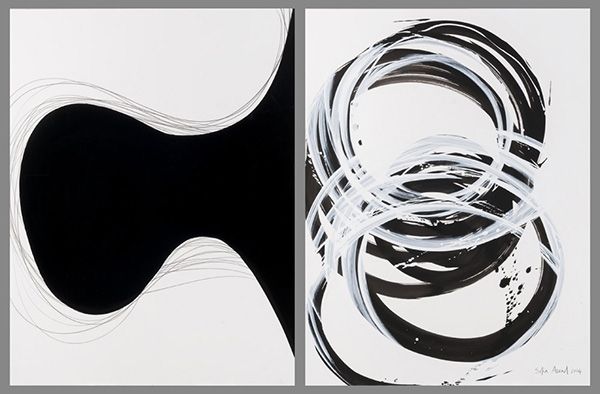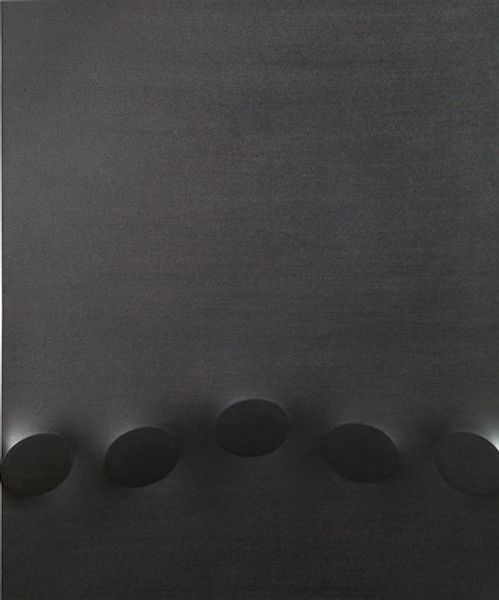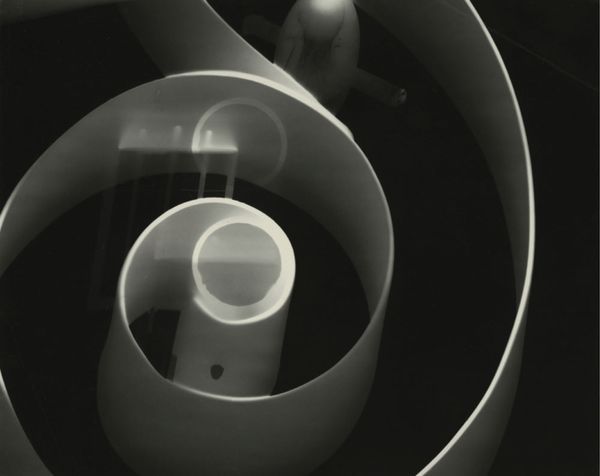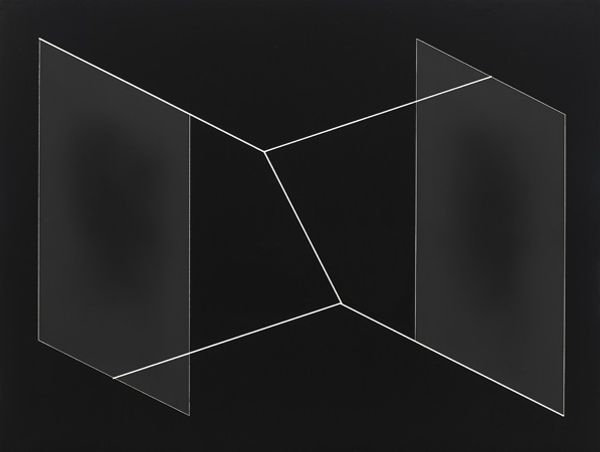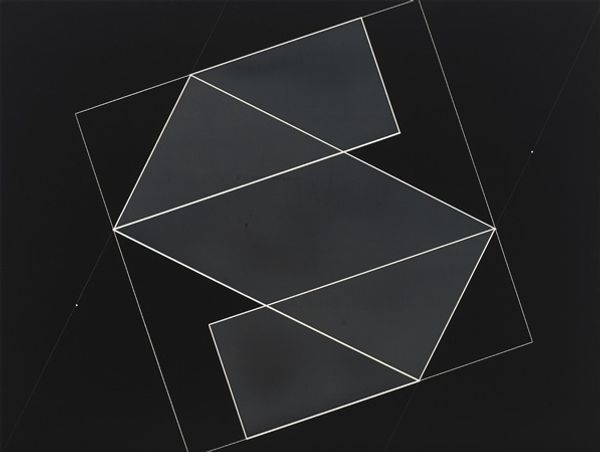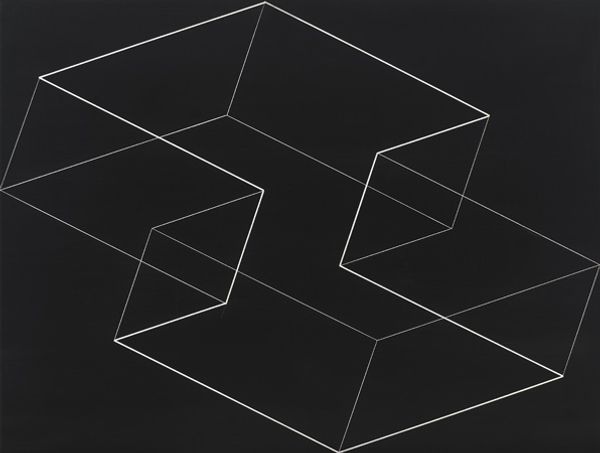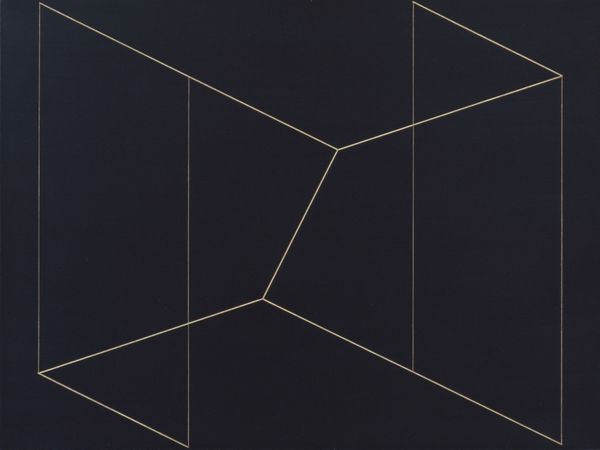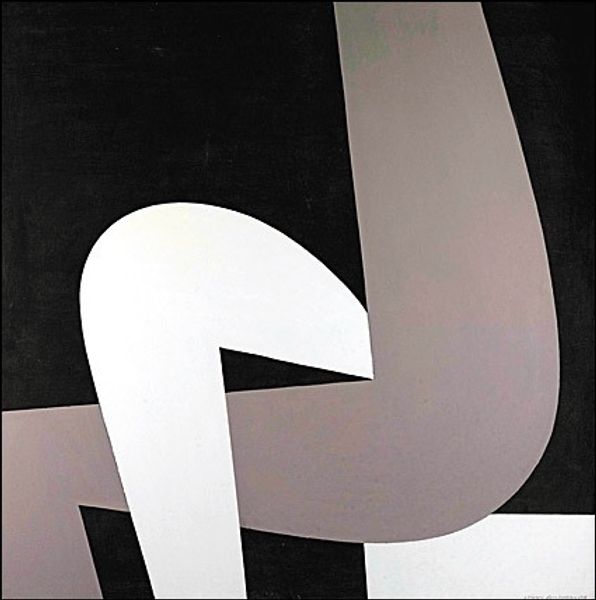
acrylic-paint
#
contemporary
#
op-art
#
op art
#
acrylic-paint
#
form
#
geometric-abstraction
#
abstraction
#
line
#
modernism
Copyright: Adnan Coker,Fair Use
Editor: This acrylic painting from 2008 is simply called "Untitled," by Adnan Coker. It's hard not to notice the monochromatic, Op-Art inspired shapes... What can you tell me about this work? Curator: Notice the stark acrylic application. No impasto here. The mechanical smoothness draws our attention to the processes needed to create these gradients, right? This speaks to Op-Art's project of making the artistic hand virtually disappear. The labour involved in creating the illusion is masked to draw our eye to the reception of these illusory forms. How does this piece challenge our understanding of high art versus the supposedly lesser medium of graphic design, which makes extensive use of commercial modes of acrylic painting? Editor: That’s interesting… I never considered the role of labour here, particularly when it looks so, well, seamless. How does it play into the context of Op-Art’s time? Curator: Good question! Consider the broader consumption patterns of the time. Op-Art arose alongside the mass production of goods; and the labor to create the goods that became popular starting in the 60s. Coker made this in 2008, however. How do you think its meaning shifted, from the height of industrialisation to the rise of globalized finance? Is there an irony to creating illusions through labour that, today, is increasingly hidden? Editor: I guess there's almost a nostalgia to the physical creation, the labor becoming valuable in an era of digital art. Curator: Precisely. It reclaims value through visible means of production, critiquing art’s detachment from labor even as it reinforces its own market value. What did you learn about the labor behind art today? Editor: I see that I have a lot more to think about. Thanks for revealing how Coker's material process creates these unique points.
Comments
No comments
Be the first to comment and join the conversation on the ultimate creative platform.
